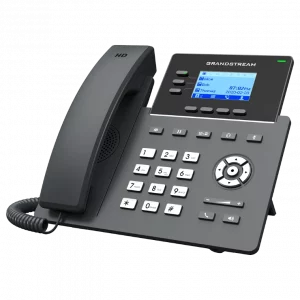
All About Cloud Voice SIP: Understanding Session Initiation Protocol
Cloud Voice SIP in a Nutshell
– Cloud Voice SIP is an innovative technology using Voice over IP (VoIP) to convert traditional phone systems to digital.
– It allows digital communication over the internet, making communication scalable and flexible.
– It’s not bound by physical constraints, hence paving the way for broader communication capabilities.
– The technology includes Voice over IP (VoIP), ISDN PBX, and SIP Gateway.
– It plays a pivotal role in modern communication, especially in the era of digital transformation.
Has your organization been grappling with an outdated, costly, and less flexible phone system? Are communications frequently interrupted, dislocating crucial business operations? You’re not alone. Many businesses, especially small to medium-sized ones, face these shortcomings of traditional telephony systems daily. These systems are often expensive, rigid, and do not provide adequate scalability for a business looking to expand. So, what’s the solution? Allow us to introduce you to Cloud Voice SIP.
Cloud Voice Session Initiation Protocol (SIP), offered by us at SIP.US, is a game-changing technology that uses Voice over IP (VoIP) to transform your traditional PBX phone system to VoIP via a SIP gateway. The result? An efficient, scalable, and streamlined communication system that propels business communication into the stratosphere.
With most businesses choosing digital transformation, Cloud Voice SIP, seamlessly integrating with VoIP technology, is becoming the go-to solution for communication around the globe. Unlike traditional phone systems, Cloud Voice SIP is not bound by physical constraints. Instead, it opens up a world of expansive capabilities, integrating with cloud-based telephony to bring together an array of communication channels, not just voice calls.

Let’s explore the nuances of this transformative technology and how it can augment your business’s communication needs.
Understanding the Basics of SIP
Before we delve into the specifics of how Cloud Voice SIP can revolutionize your business communications, it’s crucial to grasp the fundamental concept that underlies it all: SIP, or Session Initiation Protocol.
What is SIP?
Session Initiation Protocol, or SIP, is essentially a set of rules that dictate how multimedia communication sessions are initiated and terminated. In simpler terms, SIP is the protocol that powers communications over the internet. It’s the technology that lets your devices talk to each other over the internet, making Voice over IP (VoIP) and other internet-based communications possible.
But remember, while SIP and VoIP are closely interconnected, they are distinct technologies. While VoIP is the method of transforming voice calls and messages into digital data transmitted over internet networks, SIP is the technology that enables this process. It’s the enabler that initiates and ends data transfer between devices.
How SIP Works in Communication
To visualize how SIP works, think of traditional telephone systems where connections are made through physical lines and exchanges, known as the Public Switched Telephone Network (PSTN). The limitations of this system lie in its physicality – it can only handle as many connections as there are physical lines, which restricts its scalability and flexibility.
SIP, on the other hand, operates in the digital realm, using the internet to establish connections. This eliminates the physical limitations of traditional systems, opening up a world of possibilities for scalability and flexibility. It allows devices to share voice, video, instant messages, files, and other multimedia communication sessions over the internet, connecting devices regardless of their physical location.
The Benefits of Using SIP
So why should your business care about SIP? There are several compelling reasons. First, the scalability and flexibility offered by SIP are unmatched by traditional systems. You are no longer tethered by physical lines and can easily scale up or down to match your business needs.
Second, SIP can lead to significant cost savings. Because it operates over the internet, long-distance and international calls can be made at a fraction of the cost of traditional phone calls.
Third, SIP’s ability to support a wide range of communication types – from voice and video calls to instant messaging and file sharing – allows for a unified and efficient communication system. This integration enhances collaboration and productivity within your organization.
In summary, understanding the basics of SIP is the first step towards leveraging the power of Cloud Voice SIP. Embracing SIP can transform your business communications, allowing for enhanced scalability, cost efficiency, and seamless collaboration. At SIP.US, we’re here to help you navigate this digital transformation and unlock a universe of communication possibilities.
The Difference Between Cloud Voice SIP and Traditional Phone Systems
Traditional Phone Systems Explained
Traditional phone systems, commonly referred to as landlines, have been the cornerstone of business communication for many years. These systems rely on a network of physical lines, known as the Public Switched Telephone Network (PSTN), to facilitate voice calls. Despite their reliability, traditional phone systems can be restrictive, especially in today’s digital era.
The main limitations of traditional phone systems include:
- Limited Scalability: The ability to add or remove lines is constrained by the physical infrastructure in place. This makes it difficult for businesses to adapt to changes in call volume and workforce size.
- Cost: Traditional phone systems often require significant upfront investment in hardware. Plus, there are ongoing costs for maintenance and for each minute of call time, especially for long-distance and international calls.
- Lack of Advanced Features: While some systems may offer features like voicemail and call forwarding, they lack the advanced capabilities of modern communication systems, such as video conferencing and instant messaging.
How Cloud Voice SIP Transforms Traditional Phone Systems
Cloud Voice SIP, or Session Initiation Protocol, offers a modern solution to the limitations of traditional phone systems. Instead of relying on physical lines, Cloud Voice SIP uses the internet to facilitate voice calls, transforming them into digital data that can be transmitted over any internet connection.
This technology brings several transformative benefits:
- Scalability: With Cloud Voice SIP, adding or removing lines is as simple as changing a setting in your control panel. This makes it easy to adapt your phone system to the needs of your business, whether you’re growing, downsizing, or simply dealing with seasonal call volume changes.
- Cost Savings: Because Cloud Voice SIP uses the internet to make calls, it can offer significant cost savings, especially on long-distance and international calls. Plus, there’s no need for expensive hardware or maintenance.
- Advanced Features: Cloud Voice SIP supports a range of advanced communication features, from video conferencing and instant messaging to call recording and analytics. These features can enhance collaboration, improve customer service, and provide valuable insights into your business.
At SIP.US, we’re proud to offer a Cloud Voice SIP solution that makes it easy for businesses to transition from traditional phone systems. With our easy-to-use control panel and predictable pricing, we’re committed to making business communication simpler, more flexible, and more cost-effective.
Cloud Voice SIP vs. Cloud PBX vs. SIP Trunking
Now that we’ve established the fundamentals of Cloud Voice SIP, let’s delve deeper into how it compares with other popular communication solutions: Cloud PBX and SIP Trunking. Understanding these differences will help you make an informed decision about the best solution for your business.
What is Cloud PBX?
Cloud PBX, or Private Branch Exchange, is an internet-based phone system hosted by a service provider. Instead of being tied to traditional phone lines, all your calls are sent and received over the internet. This system is ideal for businesses of all sizes, offering scalability and flexibility without the need for extensive hardware or maintenance.
With a Cloud PBX, you can easily add or remove phone lines as your team grows or downsizes. Plus, because it’s hosted in the cloud, it’s not location-dependent. This means your team can work and communicate from anywhere with an internet connection, making it a perfect solution for businesses with remote or mobile workers.
What is SIP Trunking?
SIP Trunking, on the other hand, is a method of sending voice and other unified communications services over the internet. It works with an IP-enabled PBX (Private Branch Exchange) system, providing a direct connection between your business and your Internet Telephony Service Provider (ITSP).
SIP Trunking is a great option for businesses that already have a PBX but want to leverage the benefits of internet-based calls. It allows you to consolidate all your communications into one, making it easier to manage and potentially reducing costs. However, unlike a Cloud PBX, SIP Trunking requires you to have an on-premise PBX system.
Comparing Cloud Voice SIP, Cloud PBX, and SIP Trunking
Now, let’s compare these three communication solutions.
Cloud Voice SIP is a technology that enables voice communication over the internet. It’s an ideal solution for businesses looking to maximize the value of their communication systems, providing unlimited capabilities for calling, messaging, and video calls. One of its main benefits is scalability, as it allows your organization’s communications to expand as needed.
Cloud PBX, as mentioned earlier, is a fully hosted phone system that provides call routing, voicemail, call forwarding, and other features typically associated with a business phone system. It’s a good choice for businesses that want a fully managed solution without the need for in-house hardware.
SIP Trunking is best for businesses that already have a PBX but want to transition from traditional phone lines to internet-based calls. With SIP Trunking, you can leverage your existing system, making it a cost-effective solution.
In conclusion, while each of these solutions utilizes SIP technology, they serve different purposes based on the specific needs and infrastructure of a business. Cloud Voice SIP offers a robust and scalable solution for businesses looking to take full advantage of internet-based communications. On the other hand, Cloud PBX and SIP Trunking can be ideal for businesses that require a more specific setup, whether it’s a fully hosted phone system or a bridge between a traditional PBX and the digital world.
At SIP.US, we’re here to help guide you in choosing the right solution for your business. Our team of experts is always ready to provide tailored advice based on your unique communication needs.
Practical Applications of Cloud Voice SIP
Cloud Voice SIP is not just a concept. It’s a powerful tool with practical applications that are revolutionizing the way organizations communicate. From government departments to businesses and collaborative platforms like Microsoft Teams, the benefits of cloud voice SIP extend far and wide.
Cloud Voice SIP in Business Communication
In the business world, the ability to adapt and respond quickly to changing needs is crucial. Traditional telephony systems can be rigid, expensive, and difficult to scale up or down as needed. That’s where cloud voice SIP comes into play, offering a more flexible and cost-effective alternative.
With a cloud voice SIP, businesses can optimize costs by scaling their voice services based on actual usage, thus avoiding unnecessary expenses related to overprovisioned infrastructure. It’s the pay-as-you-go model of cloud services applied to voice communication.
Beyond just voice calls, cloud voice SIP integrates seamlessly with Unified Communications (UC) platforms, creating a unified and cohesive communication environment. This integration allows businesses to combine voice, video, messaging, and collaboration tools into a single, streamlined interface, enhancing employee productivity and fostering efficient communication across the organization.
Cloud Voice SIP in Government Organizations
Government departments are continually striving for flexibility, scalability, and resilience in their operations. They need to maintain seamless communication across multiple departments and locations, which can be a challenge with traditional telephony systems.
Cloud voice SIP allows government organizations to break free from the constraints of traditional systems. It enables seamless connectivity across multiple cloud platforms, ensuring dynamic scaling of voice services based on demand. This reduces the need for extensive hardware investments and enhances resilience. For instance, if one cloud provider experiences a service disruption, traffic can be rerouted to another, ensuring continuous communication.
Integration of Cloud Voice SIP with Collaborative Platforms
As more businesses start to use collaborative platforms like Microsoft Teams, having robust and reliable voice communication becomes increasingly important. Cloud Voice SIP provides the perfect solution for this need. It allows businesses to link their phone systems directly with customer relationship management (CRM) software, enhancing the clarity of business relationship records and improving customer service.
Whether your team is in the office or working remotely, cloud voice SIP ensures that everyone is connected, collaborating, and communicating effectively. It’s not just about making phone calls – it’s about enabling a complete, integrated communication solution that meets the demands of the modern workplace.
At SIP.US, we understand the power of cloud voice SIP and its potential to revolutionize communication in various sectors. We’re committed to providing advanced and reliable cloud SIP services to help you unlock these benefits for your organization.
Choosing the Right Solution: Factors to Consider
Selecting the right communication solution for your business can be a complex task. It requires understanding the unique aspects of your business operations and aligning them with the right type of technology. For businesses contemplating a move from traditional phone systems to cloud voice SIP, we recommend considering the following key factors:
Scalability
The size of your business and the potential for future growth should be major considerations. The ability to scale up or down as your business evolves is crucial. With cloud PBX, it’s simple to add phone lines when new team members are hired, making it an excellent choice for growing businesses. In contrast, SIP Trunking is more suited for businesses with a stable number of users. When evaluating options, consider your future growth plans and how each solution can accommodate these.
Cost
Different solutions come with varying cost implications. SIP Trunking tends to be more cost-effective for larger businesses with high call volumes. On the other hand, cloud PBX may be more affordable for small businesses. It’s vital to consider both the initial setup costs and the ongoing operational costs when comparing options.
Control
If you prefer to have full control over your phone system, then SIP Trunking might be your best option. It gives you more control over your user interface and the ability to add or change service. However, understand that more control may also mean more management responsibility on your part.
Mobility
For businesses with remote workers or teams distributed across different locations, mobility becomes a critical factor. Cloud PBX is particularly beneficial in such scenarios as it allows forwarding calls to mobile devices and accessing advanced voicemail, faxes, and business SMS.
Integration
The ability to integrate with other services you currently use is another critical factor. Cloud PBX often provides better integration options with third-party services, which can simplify operations and improve efficiency.
In conclusion, choosing between cloud voice SIP, cloud PBX, and SIP Trunking requires a careful evaluation of these factors. At SIP.US, we offer both SIP trunking and Cloud PBX solutions, giving you the flexibility to choose the option that best fits your business. Our team of experts is always ready to guide you through the process and help you make an informed decision.
The Future of Communication with Cloud Voice SIP
As we navigate through the digital revolution, SIP technology is proving to be more than just a tool for voice communication. With its increasing capabilities and evolving role, the future of communication with Cloud Voice SIP looks bright, boundless, and exciting.
Beyond Voice Calls: The Expanding Role of SIP
SIP technology has evolved to support a broad spectrum of real-time communication services beyond mere voice calls. From enabling high-quality video conferencing to facilitating instant messaging and internet browsing, SIP is revolutionizing the way we communicate and collaborate in the digital age.
In addition to these, SIP also supports critical services such as emergency calls and directory assistance. The ability to consolidate multiple communication channels into a single connection enhances efficiency and ensures no calls are delayed or lost, even during peak periods. This all-in-one solution is bringing enhanced reliability, scalability, and cost-effectiveness to business communications.
At SIP.US, we acknowledge the expanding role of SIP in modern communication and are committed to providing businesses with the tools they need to harness the power of this game-changing technology.
Future-proofing Communication Infrastructure with Cloud Voice SIP
As businesses continue to adapt to the changing digital landscape, the need for a future-proof communication infrastructure becomes paramount. Cloud Voice SIP offers a comprehensive solution, providing the flexibility, scalability, and resilience businesses need to thrive in an interconnected world.
One of the significant drivers of this burgeoning SIP market is the integration of 5G networks, promising higher definition video content, faster loading speeds, and improved connectivity for wearables. This growth is further propelled by the global shift towards remote work, as businesses increasingly adopt IP telephony services with SIP for efficient communication from any location.
We believe that by embracing Cloud Voice SIP, businesses can ensure their communication infrastructure is ready for the future. Whether it’s integrating legacy phone systems during an acquisition or migrating business communications from on-premises to the cloud, SIP.US offers solutions tailored to your business needs.
In conclusion, the future of communication with Cloud Voice SIP is not just about making calls over the Internet, but about creating a more connected and efficient world. Are you ready to be part of this exciting future? Explore our SIP trunking services and see how we can help revolutionize your business communication.
Conclusion: Why Cloud Voice SIP is Essential for Modern Communication
The way businesses communicate is evolving at an unprecedented speed. Traditional phone systems, once the cornerstone of business communication, are now giving way to more advanced, flexible, and cost-effective solutions. Among these, Cloud Voice SIP stands out as a key player.
But why is Cloud Voice SIP so crucial for modern communication? Let’s recap what we’ve learned.
First and foremost, Cloud Voice SIP offers unparalleled flexibility and scalability, allowing businesses to adapt to changing needs quickly and efficiently. It breaks free from the physical limitations of traditional phone systems, enabling businesses to expand and contract their communication capabilities as needed. This is particularly important in today’s business landscape, where the operational model can be anything from fully remote to hybrid, collocated, or geographically dispersed.
Furthermore, Cloud Voice SIP also offers significant cost savings. By converging voice and data into a single, internet-based network, businesses can eliminate or significantly reduce long-distance or international call charges. They can also avoid the high costs associated with traditional phone systems, such as hardware, service calls, and phone line installation.
But perhaps the most compelling reason to embrace Cloud Voice SIP is its potential to future-proof business communication. As industries continue to digitize and the Internet of Things (IoT) becomes more pervasive, SIP’s role in communication is set to expand beyond voice calls. By integrating SIP with Cloud Voice and other cloud-based telephony tools, businesses can prepare their communication infrastructure for the future.
At SIP.US, we are committed to helping businesses harness the power of Cloud Voice SIP. We understand the importance of staying ahead of the curve and provide businesses with the tools they need to thrive in today’s interconnected business landscape.
In conclusion, Cloud Voice SIP is more than a technology for voice communication – it’s a comprehensive solution for modern, digital-age communication. By embracing Cloud Voice SIP, businesses can ensure their communication infrastructure is ready for the future.
To learn more about our services and how we can help you, check out our FAQs or contact us today.


